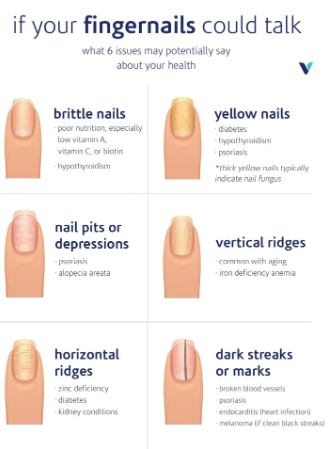BOURSESSENEGAL – Noticing a normal black line on nail can vs. Melanoma, especially when you consider the risk of melanoma. Understanding the difference between a harmless nail pigment and a potentially serious condition is crucial for your health. This guide will help you identify what to look for and when to seek medical advice.
Understanding Nail Pigmentation
Nail pigmentation can occur for various reasons. In many cases, it’s completely normal. However, sometimes, it can be a sign of something more serious, such as melanoma, a type of skin cancer. Let’s break down the differences so you can better understand what you’re dealing with.
What Causes Normal Black Lines on Nails?
Normal black lines on nails often stem from benign conditions. Here are some common causes:
1. Melanonychia
Melanonychia refers to dark streaks or bands on the nails. It can result from increased melanin production and is often harmless. This condition may arise from:
- Genetics: Some people inherit a tendency to develop these lines.
- Injury: Trauma to the nail can lead to pigmentation changes.
- Medications: Certain drugs may cause discoloration as a side effect.
Typically, melanonychia does not indicate any health issues, especially if the line is uniform in color and width.
2. Age-Related Changes
As you age, your nails may undergo changes, including the development of dark lines. This change is usually benign and does not require treatment. Regular nail care can help maintain their health and appearance.
When Should You Be Concerned?
While many black lines are harmless, certain characteristics can signal a need for concern. Recognizing these signs early can be crucial for effective treatment.
Identifying Melanoma on Nails
Melanoma can occur under the nail and is known as subungual melanoma. This type of skin cancer can be aggressive if not detected early. Here’s how to identify potential warning signs:
1. Uneven Borders
Unlike normal black lines that tend to be smooth and uniform, melanoma often has irregular or jagged edges. If you notice a line that appears uneven, it could be a cause for concern.
2. Color Variation
Normal pigmentation usually has a consistent color. If the line appears to have multiple shades—such as dark brown, black, or even gray—this variation can indicate melanoma.
3. Width Changes
A sudden increase in the width of a black line is a red flag. If a previously thin line starts to widen, it’s essential to consult a healthcare provider for evaluation.
4. Associated Symptoms
Pay attention to any other symptoms that may accompany the black line. These can include:
- Pain: If the area around the nail becomes painful or sensitive.
- Swelling: Noticeable swelling or changes in the surrounding skin.
- Nail Changes: Changes in the nail’s shape or texture can also be significant.
What to Do If You’re Concerned
If you notice any of the concerning signs mentioned above, taking action promptly is essential. Here’s how to proceed:
1. Schedule a Dermatology Appointment
A dermatologist specializes in skin conditions and can provide a thorough examination of your nails. They may perform a biopsy if they suspect melanoma, which involves taking a small sample for lab analysis.
2. Keep a Record
Document any changes in your nails, including the size, color, and shape of the black line. Taking photographs can also help provide a visual history for your doctor.
3. Avoid Self-Diagnosing
While it’s helpful to be informed, avoid jumping to conclusions. Many conditions can cause nail pigmentation. A professional evaluation is necessary for an accurate diagnosis.
Prevention and Monitoring
While not all cases of nail pigmentation can be prevented, you can take steps to maintain nail health and monitor changes effectively.
1. Regular Self-Examination
Make it a habit to examine your nails regularly. Look for any new lines or changes in existing ones. Early detection can lead to better outcomes if treatment is necessary.
2. Protect Your Nails
Keep your nails protected from injury. Wearing gloves while gardening or doing household chores can help prevent trauma that may lead to melanonychia.
3. Maintain Overall Skin Health
Taking care of your skin contributes to overall nail health. Regularly applying sunscreen to your hands and nails can help protect them from harmful UV rays, which can contribute to skin cancers, including melanoma.
Conclusion: Being Proactive About Nail Health
Understanding the differences between a normal black line on your nail and potential signs of melanoma is vital for your well-being. While many cases of nail pigmentation are harmless, recognizing the warning signs of melanoma can save your life.
Always consult a healthcare provider if you have concerns. Regular self-examinations and a proactive approach to nail care will help you maintain healthy nails and catch any issues early. Stay informed, and take charge of your nail health!
normal black line on nail vs melanoma
REFERENCE : https://www.health.com/



